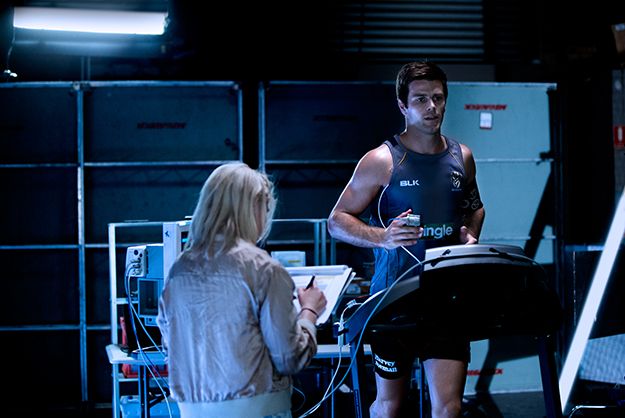Experience as Data, Data as Experience
Posted May 21, 2014
There are some new data points out in this Summer’s edition of Design Intelligence. 14 Million wearable devices shipped in 2011. By 2017 it is estimate that 171 million devices will be shipped and in use. Revenue for wearable devices in 2012 was 1.4 billion. By 2018, the projection is 19 billion. (Design Intelligence, May June 2014; Vol. 20 Num. 3)
The growth in the industry has been explosive. Some notable moments on the race to this point on the wearable tech timeline are: 1600 – The Abacus Ring: 1979 – The Sony Walkman; 2001 – the iPod; 2012 – the Fitness wearable explosion, (choose your wristband of choice); 2013 – Google Glass, for better or worse.
PSFK has posted several interesting articles on Billie Whitehouse and her company Wearable Experiments. She is in the process of designing wearable tech that surpasses the current standard and pushes its uses into new areas. Imagine the interactive brassiere, called Fundawear that allows couples to experience touch over the internet; and the smart jogging shirt that directs your path via a smartphone interface, the Alert Shirt. These are just two things that could add to the plethora of devices that are already on the market.
The infographic at the bottom of the page outlines — in a smart way — everything you would want to know about wearable tech on the market. But not even this fancy picture goes far enough. It demonstrates a working knowledge of the Glass to FitBit to Notch schema. It may open your eyes to the dozen ways to track movement.
In our opinion there is a larger question that arises with the introduction of the wearable tech market place. Emily Conrad made mention of it in her article on the CES 2014. What is to be done with this data?
As it stands now experience can be tracked, measured, analyzed, shared, integrated into apps and platforms, and it can just sit there. In the near future, experience — what we do everyday, but more, how we interact with other people and places — will be usable data. As the technology works now, our experience is a stand alone act of doing “something.” It is isolated as an activity. But as this platform technology moves forward and becomes further integrated, we will be able to measure how we interact with people and places through more than the number of our steps, the distance we have run, or where our smart watch is in relation to traffic.
When integration occurs, the wearable tech “evolution” will get interesting for cultural institutions and brands. The technology is already solving problems for a wealth of people. It tracks your steps, calories, distance, and so forth. Some devices are tapping into the sensory data of emotions — the Microsoft SmartBra helps people fight the urge to overeat by tracking the body’s triggers. When more of these devices are integrated together, when sensory data points become holistic, interaction between a persons emotional experience will be able to be integrated into and with a physical space.
Imagine: museums will be able to deliver content in an interactive way based upon the retains and emotional experiences of the visitors The visitors will receive a more in depth experience because they are “curating” the experience by their reactions, choices, emotional judgements, as well as the basic interactive elements of swipe, poke, push, etcetera.
Brands can take advantage of the same concepts. Brands are realizing more and more that their future is based upon experiences that their customers and the public at large have with their products. By creating more tailored brand experiences using wearable tech that allows a more in-depth emotionally driven interaction, brands will be able to capitalize on the humanizing aspects that most experiential marketing lacks.
This is a holy grail, a large idea, but the principles behind the idea map back to ESI’s founding. The interaction of a group of people, emotionally and intellectually, through ever-evolving content, and changing experiences based on input. Nothing is more sweet and attuned to the experience designers heart.
(Cover Photo: Muse Headband)




Join The Conversation